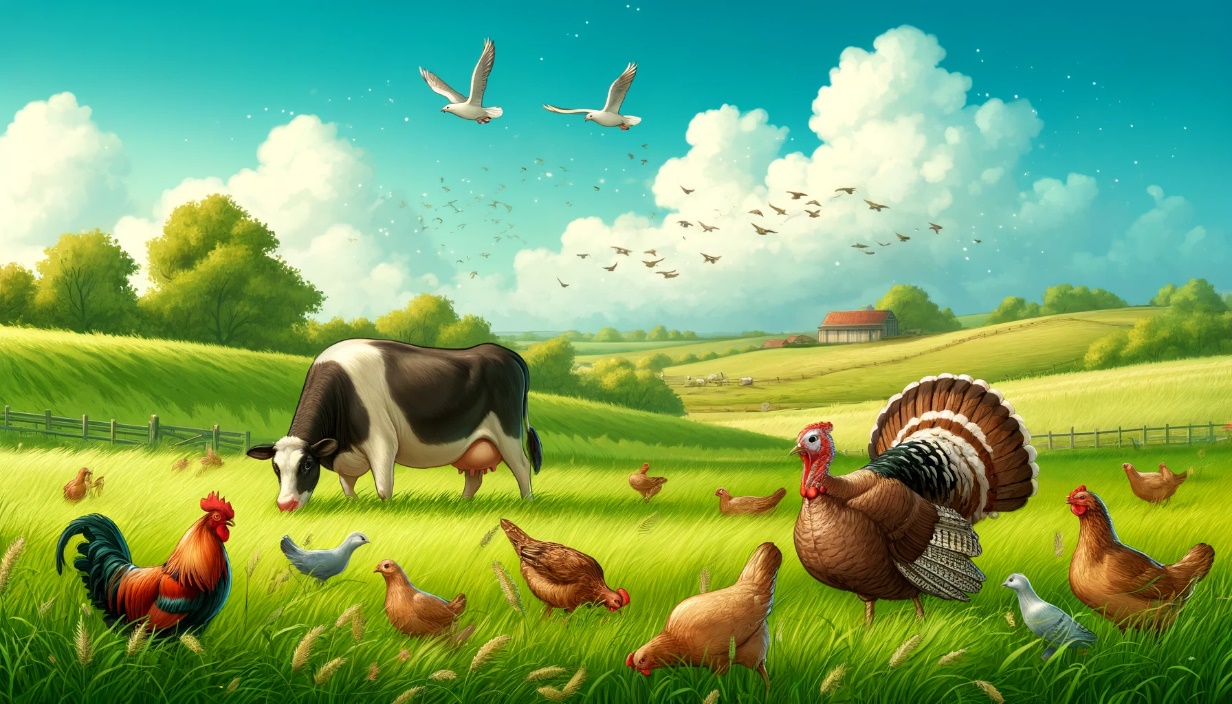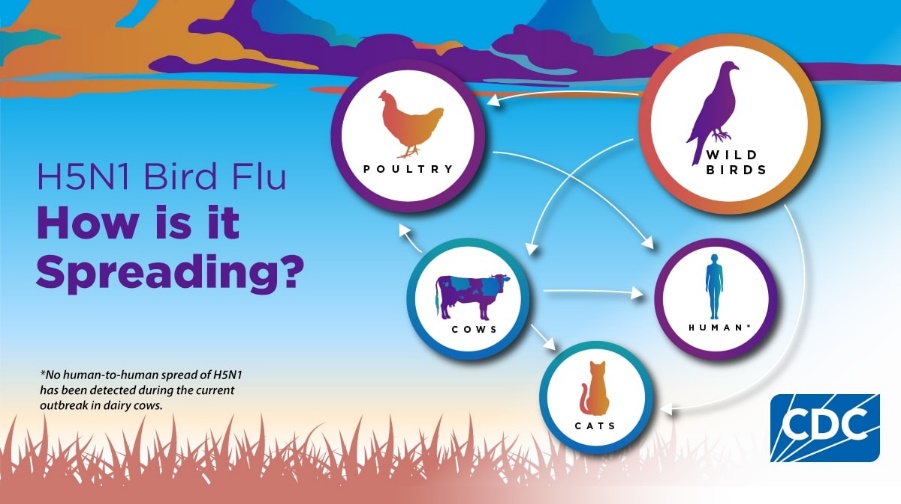


Joseph R, Anticaglia, MD
Does Bird Flu have the potential to mutate into a more contagious and deadly version of itself just as SARS mutated into COVID19?
Back in 2007, Gary Wong, and T Leung wrote, “Severe acute respiratory syndrome (SARS), and Avian influenza (bird flu) are the two newly emerged infections with pandemic potential that have arisen from Asia in the new millennium.” In 2020, COVID-19 fulfilled its pandemic potential, became a household word, and a deadly virus causing millions of deaths.
In 1996, bird flu was first detected in geese in Southern China. The next year, H5N1 poultry outbreaks happened in China, and in Hong Kong. The outbreaks caused more than 860 human infections in poultry workers with a mortality rate greater than fifty percent. The first confirmed case of human bird flu in the world was in a three year old child in Hong Kong after exposure to infected poultry in 1997.
The first confirmed case of human bird flu (H5N1) in the U. S. was in a Colorado poultry worker, in April 2022. The CDC confirmed the first human case of bird flu in a Texas dairy worker, on April 1, 2024. The worker had direct contact with dairy cows infected with the virus. Since the April report, more cases of bird flu have been reported in different parts of the U. S.
For the year 2024, the CDC confirmed sixty three (63) cases of bird flu HSN1 in the United States. The majority of cases was confirmed in humans working with dairy herds, the other cases involved people working with poultry farms and culling operations. As of January 16, 2025, the virus has spread to poultry in 51 states, and to dairy cows in 16 states.

Bird flu (H5N1), or Avian influenza, is a viral infection caused by influenza Type A virus (influenza A). Bird flu viruses are classified as either “low pathogenic” or “highly pathogenic” based on the severity of the disease they cause in poultry, and their genetic features. Highly pathogenic avian influenza (HPAI) strains are deadly to domestic poultry. Low pathogenicity means they cause no signs, or minimal clinical signs of infection in poultry.
Bird flu is classified as a type of influenza A, and within this category there are many different subtypes, that is, a more specific version of influenza A. Thus far, a major subtype that has spread bird flu to humans has been caused by influenza A (H5N1). See glossary
Bird flu may be mild or severe. In many cases it mimics flu-like symptoms which include stuffy or runny nose, sore throat, cough, muscle aches, fatigue, fever, pink eye and shortness of breath.
A swab is taken from the nose, throat, or conjunctiva of an individual and sent to the laboratory for a culture and sensitivity. Health care workers should alert the lab that you suspect bird flu.
Dairy, poultry, and waterfowl workers are at risk for bird flu when they come in contact with an infected animal’s body fluid, saliva, mucus, feces, or inhale the virus from contaminated dust. Avoid unpasteurized or raw milk. Cook chicken thoroughly. Avoid exposure to sick , or dead birds.
Dairy cattle: Ongoin

On December 18, 2024, in Louisiana, a patient was hospitalized in critical condition with a severe case of bird flu (H5N1). This marks the first instance of severe illness linked to the virus in the United States. The 65 year old patient with underlying medical problems, had been exposed to sick, and dead birds in a backyard flock. In early January 2025, the Louisiana Department of Health announced the first human death in the United States of the person hospitalized in December of last year with Bird flu (HSN1).
Noting the spread of bird flu in 16 states, and after the detection of bird flu in dairy cows, Governor Gavin Newsome of California in December of the past year, declared a state of emergency. The Biden administration, in early January 2025, worried about a potential bird flu epidemic, allocated more money and resources to combat this viral threat.
At this time, the CDC, Center for Disease Control and Prevention maintains that the public health risk to bird flu is low. Finland began vaccinating workers exposed to bird flu as early as June 2024, and took other measures to combat the potential spread of H1N1. More can be done to protect the general public, and workers exposed to bird flu to reduce the potential spread of this disease.
Reassortment is a genetic recombination process that occurs when multiple viruses infect a host cell and exchange genetic material. If a person is infected with both bird flu (avian influenza), and the flu virus, the cells can exchange genetic material. This genetic recombination can result in the formation of new viruses which have the potential to spread from person to person. It’s advisable to get vaccinated, or get a booster shot against the Flu.
According to the CDC, “The first description of avian influenza (bird flu) dates to 1878 in northern Italy, when it was described as a contagious disease of poultry associated with high mortality, referred to as “fowl plague.”
At the turn of the 20th century, it was determined that fowl plague was caused by a virus, and in 1955 the virus was identified as type A influenza virus. By 1981, the term avian influenzas was used in place of fowl plague. In 1996, the H5N1 Bird flu (Avian influenza) was first detected in domestic waterfowl in Southern China.
Bird flu viruses are classified based on a combination of two groups of proteins on the surface of the influenza A virus — hemagglutinin or “H” proteins, of which there are 16 (H1—H16), and neuraminidase or “N” proteins, of which there are 9 (N1—N9). There are many different combinations of “H” and “N” proteins, and each combination is considered a different subtype.
This article is intended solely as a learning experience. Please consult your physician for diagnostic and treatment options.